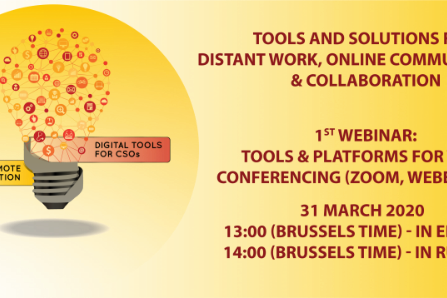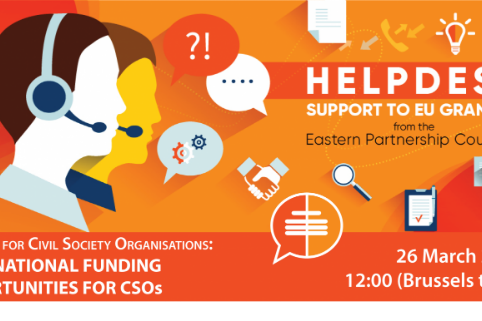2019… the year eLearning continues to grow like never before. What are the current trends? And, where do we see them heading for the remainder of the year?
How Do We See The Current eLearning Trends Of 2019 And Their Future?
2019, so far, has seen eLearning getting bigger and better. It seems there is no stopping the industry—we are being creative and innovative like never before. So, what has happened so far, and where do we see eLearning heading for the rest of the year?
Here are 2019’s top 6 eLearning trends so far:
1. Microlearning
More and more organisations are using microlearning this year. Why? Because it’s clear to see that smaller chunks of learning are not only easier to employ, but they improve learners’ retention levels—a learning manager’s dream! With long modules, learners are more likely to get bored and lose engagement.
Although the modules are smaller, they are all object driven, for higher impact. These small modules allow learning to be implemented on different devices and are easy to repeat as well as update if needed.
Modules can also be made more interactive and immersive through videos, games, quizzes, infographics, and realistic scenarios to keep learners on their toes. With such a learner-centric approach, you can see why organisations are utilising microlearning in their strategies—a definite keeper for 2019.
2. Artificial Intelligence
Artificial Intelligence (AI) in 2019 has been a clear strength in the eLearning industry. Known for personalised learning, it has been the innovation that busy learning managers needed this year.
AI uses its (machine) brain to analyse behaviour from the learner, from previous modules, and their strengths and weaknesses from each one. Using this data, AI can personalise learning by recommending certain modules for the learner. AI tries to offer modules that will fill gaps in the learners’ knowledge.
To make the eLearning process even easier, chatbots can undertake any admin work, including the onboarding of learners. With chatbots being accessible 24/7, they can be on hand to answer learner queries when needed.
AI seems to be an approach being used more, due to the smaller workload and sheer ease and accessibility—I predict it’s here to stay.
3. Gamification
Gamification was on the rise in 2018, but has it peaked or will it continue through the new year? It has been proven to improve engagement and retention levels, but it is now proving to improve sales and business performance.
The gamification approach takes learners on a journey of learning for rewards. Not only does this boost motivation levels, but it improves the learner experience—an approach aiming for behavioural change.
With personalised feedback, gamification can provide insights into learners’ progress and highlight knowledge gaps and strengths. Data from these insights is an easy way for learning managers to determine content for future learning strategies.
With more benefits of gamification being proven, it looks like gamification will only get stronger.
4. Adaptive Learning
Adaptive learning is an approach which has flourished over the past couple of years; it provides the ultimate personalised learning. Through pre-learning tests, algorithms determine which level and pace learners should be at.
Rather than putting all learners through the same modules, the adaptive learning approach considers what learners already know and don’t know. The great thing about this is that learners shouldn’t get bored sitting through modules they are already confident in; they should always be engaged with the content.
It also means that learning is more focused, and should always result in improvements to knowledge. There is no reason why adaptive learning shouldn’t continue to grow and develop in 2019; personalisation is most definitely trending, and adaptive learning achieves just that.
5. Video
Every day, one billion hours of video are watched on YouTube—no wonder video for eLearning is coming in thick and fast. Unlike static eLearning content, video makes learning more engaging. Not only is it more visually pleasing, but it can be made interactive, making the learner an active participant.
With more engaging content through the use of video, retention levels should be higher. However, this can be enhanced through interactivity. Realistic scenarios, challenges, characters and decision times take learners on a journey. Allowing them to interact with video, engages learners more and provides sustainable skills and knowledge for life on the job.
As we can imagine, video is going to be around for a very long time—everybody needs to include it in their learning strategies!
6. Mobile Learning
In today’s age, we all want things to be easily accessed. Whether that be seeing a doctor, working or playing. Mobile learning gives learners the freedom of learning where they want, and on their own personal device—what more could you want in 2019?
With newly developed platforms, mobile learning keeps both the learner and manager connected. This allows learning managers to track performance and to ensure they are on hand for any queries. Like video, this approach to learning can be made dynamic to keep learners engaged. Platforms can make use of interactivity, videos, AI and all of the other great aspects of eLearning.
With employees today wanting more professional development as well as flexibility, mobile learning will most definitely continue to shine.
The Future Of eLearning
These trends have excelled themselves this year, making eLearning much more learner-centric. As technology develops, I can only imagine these trends will get better, and continue to deliver personalised, accessible and engaging eLearning.
Source: eLearning Industry





Comment